HTC One max Review - It's Huge
by Brian Klug on October 28, 2013 10:00 AM EST- Posted in
- Smartphones
- HTC
- Mobile
- One
- Snapdragon 600
- Android 4.3
- One max
Obviously the highlight of the One max is its huge 5.9-inch 1080p display. After all, the huge display is literally the reason for the max moniker and its gargantuan size. It’s still an IPS LCD, and like the One, resolution is 1920x1080. Using the same resolution at larger size means lower PPI, but the One max is still high enough (373.4 PPI) that individual pixels shouldn’t be visible at all.

One interesting thing to note about the One max however is that the android display density is still set to 480 PPI, putting it in the same DENSITY_XXHIGH category as the One. This means that applications will look like scaled copies of what you’d expect them to look like on the One. There’s an interesting ongoing debate about what users really expect from these larger-sized smartphones and the demographic that’s buying them. Do users want scaled, larger applications which are easier to read, or the ability to display more content. HTC oddly enough seems to have scaled parts of their own UI, for example the widget panels are five row instead of four on the One max, and the launcher defaults to the 4x5 size instead of 3x4 which would look downright silly, further the status bar is also smaller.

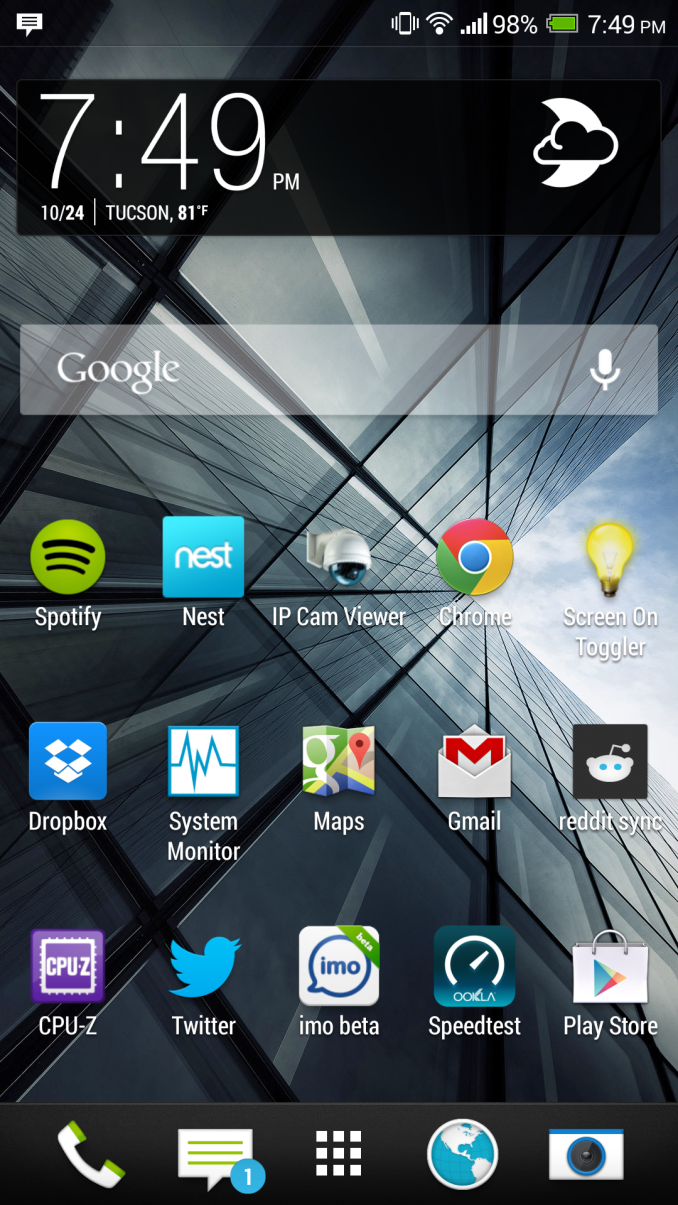
HTC One (Left), HTC One max (Right) – Note the grid and icon size changes
I’m not complaining, it’s just interesting to see 480 in Android but the HTC apps scaled down to give more real-estate, which is what I’d prefer since I have good vision.
One improvement I’m really happy about in Sense 5.5 is a change to the auto brightness function. Rather than just have a checkbox, the One max will allow you to set an upper bound for the auto brightness algorithm. Ideally I would like a higher or upper bound, or a bias function (+/- some delta), but this is a step in the right direction.
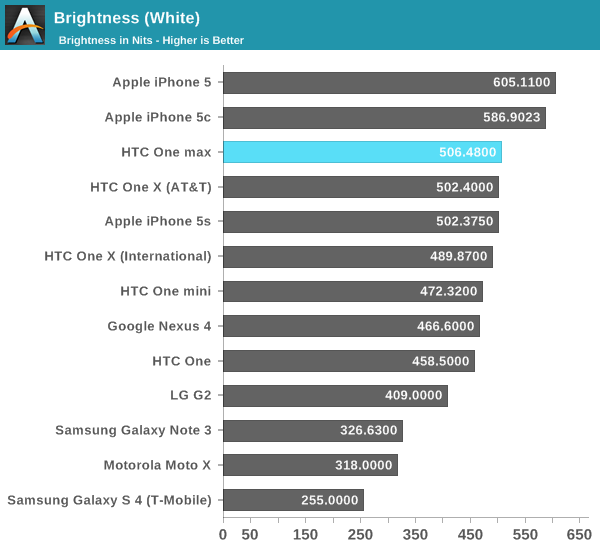
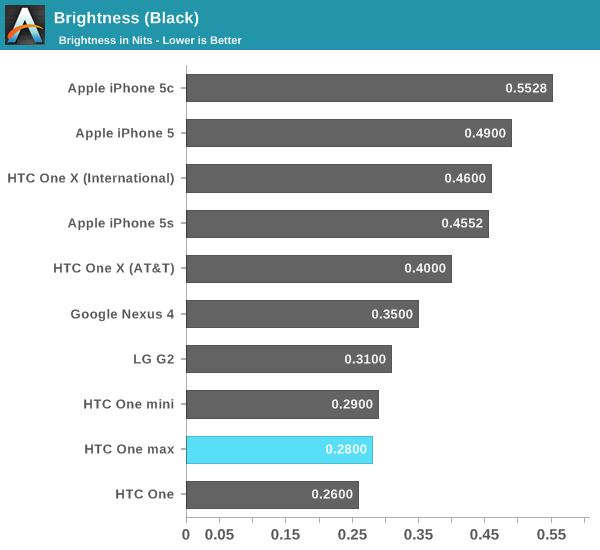
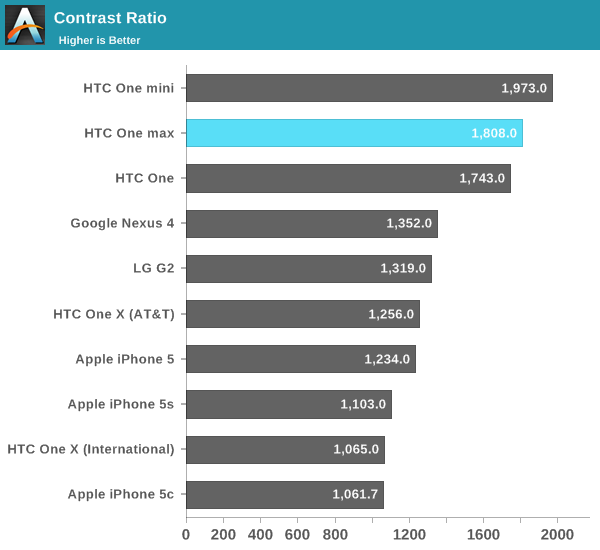
The One max display goes very bright, up to 506 nits, higher than the One or One mini. White point is also a bit more controlled than the One, at 7301 K average. My biggest complaint about the One max is that like the One it has a dynamic brightness/contrast function that adjusts screen brightness as a function of the content being displayed. That alone isn’t a huge problem, it’s just that there’s no way to disable it in the UI, which would be great, since it’s distracting watching screen brightness change as you move around the UI. I would love to see HTC go the Google approach and restrict these functions to full screen video playback, and give the option to turn it off entirely.

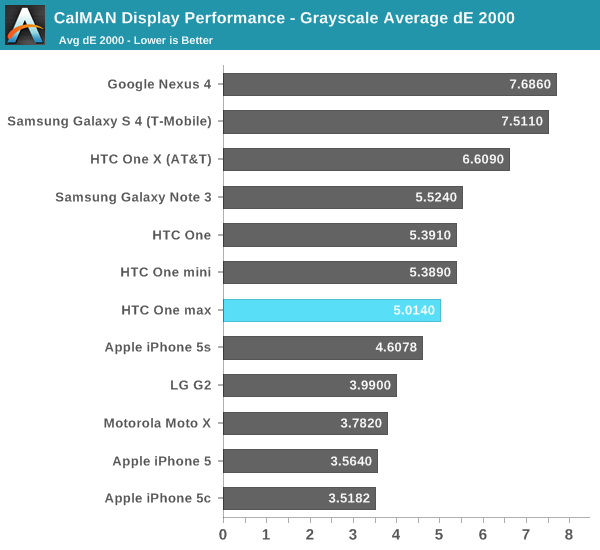
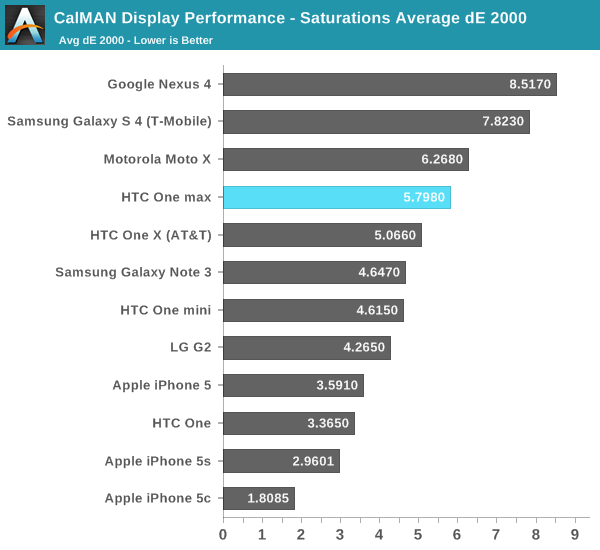


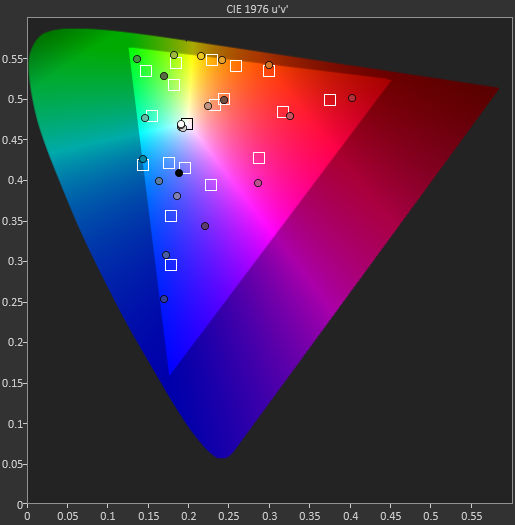
Running it through our display tests, it’s clear that the One max also has a bit of the saturation boost we’ve seen popping up on other phones as well. The saturation curves are great until the second to last point, which is almost set to maximum saturation. I’d love to see even more emphasis on color accuracy for the next generation of phones, the One max seems to be in the general ballpark of the One, but slightly worse.


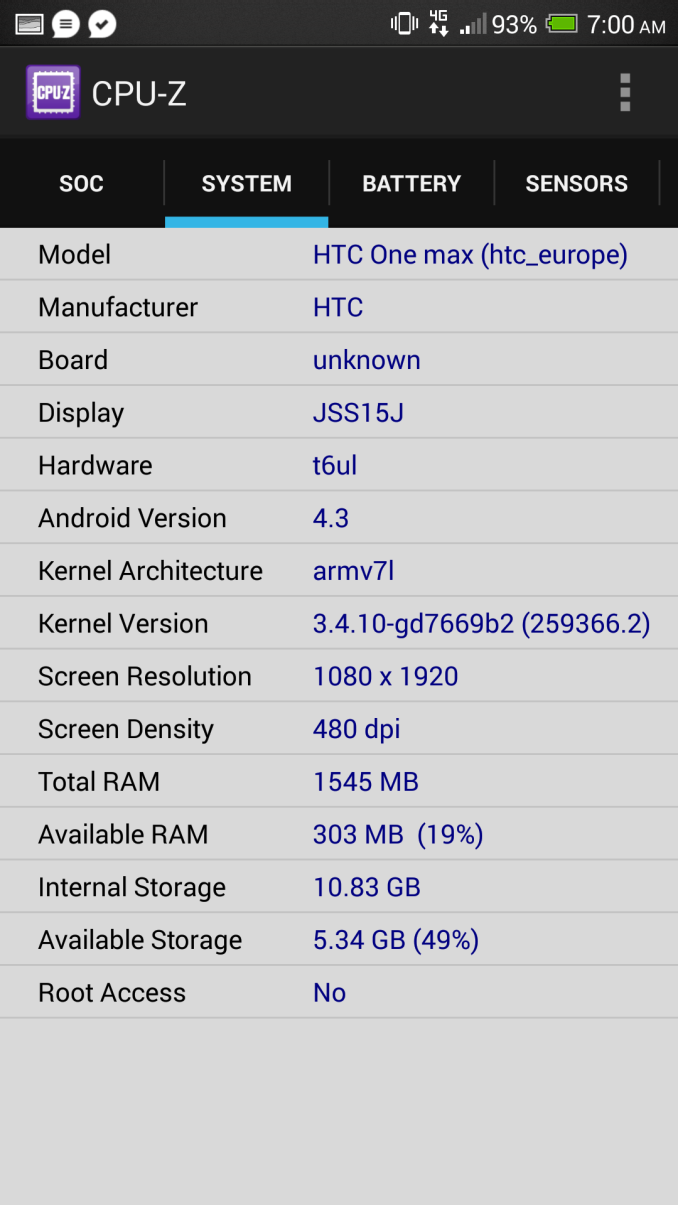
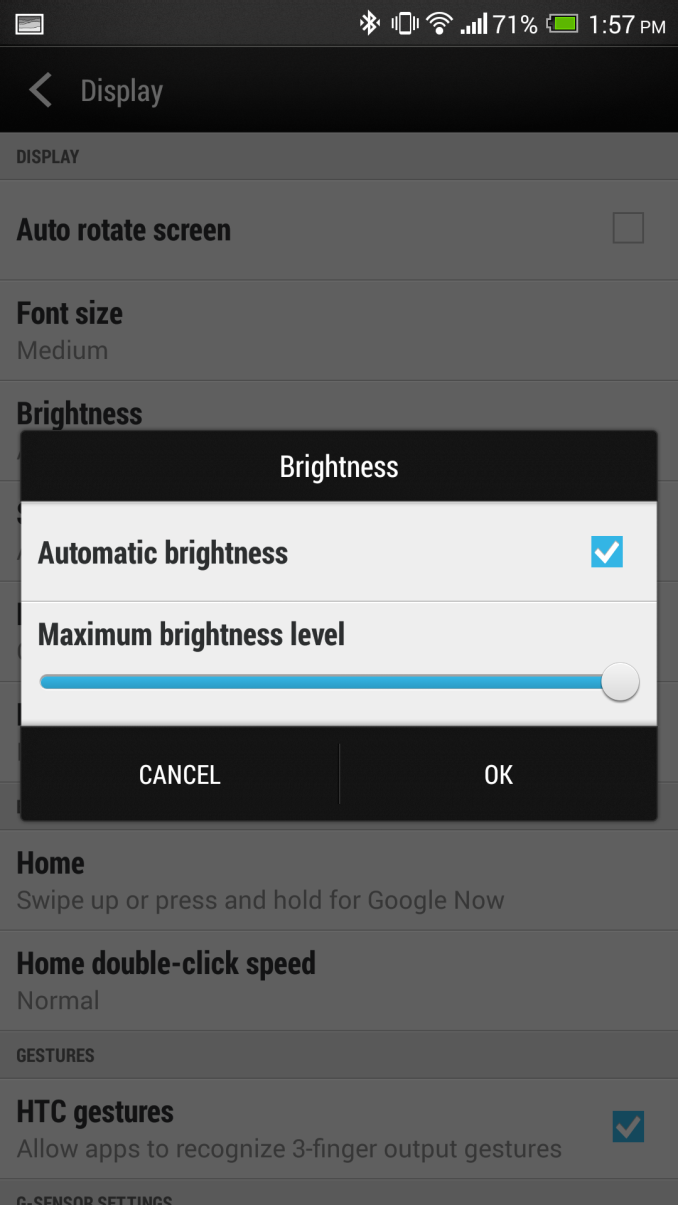









197 Comments
View All Comments
whatsa - Sunday, November 3, 2013 - link
Yes I have to admit brian has some odd perspectives at times.I find it easier when I remind myself that
" Es not the Messiah! - Es just a naughty naughty BOY!"
Impulses - Monday, November 11, 2013 - link
I could see something like Meenova's reader coming a mile away once USB OTG support became common place... I'm just surprised it took a Kickstarter campaign to make it a reality, and that it isn't more popular given this apparent need for removable storage amongst enthusiasts.I also thought we'd see USB OTG flash drives before we saw a USB OTG reader.... Though I guess it wouldn't be much smaller since you can't hide the flash memory inside the male connector itself like some of the full size USB microSD readers do.
UltraTech79 - Sunday, November 10, 2013 - link
Stupidly large.jshsimpson1 - Friday, November 15, 2013 - link
most note users do use their pens. I have the note 2 and the spend in one of the reasons I bought it among it being awesome. I love snote and I use it alot. I have a flip case which turns into a stand so that is useful for writing.fokka - Monday, December 9, 2013 - link
in the chart comparing the one/mini/max on the first page the mini is stated to have 4x krait 200 cores. as i understand, the mini is dualcore only and looking at the info on this page http://www.qualcomm.com/snapdragon/processors/400i believe it uses krait 300 cores because it's clocked at 1,4ghz.
hangfirew8 - Tuesday, December 17, 2013 - link
As always I really appreciate the depth and clarity of Brian's reviews. I've noticed one thing really missing from all, and perhaps that is because review hardware simply doesn't come with this accessory- car docks are not mentioned. After struggling with a poorly implemented car mode on the HTC Thunderbolt, I am very curious how well it works with the HTC dock. After all, one really good reason to buy a phablet over a normal size phone is that a phablet is the ideal form factor for a satnav app running docked. (Another good reason is to ditch a separate e-reader and just carry one device, not really a flaw in the review but this isn't really mentioned. I'm sure many buyers have this in mind when they buy that really, really big phone.acruhl - Saturday, April 12, 2014 - link
Sorry, I haven't read all posts. I liked the review for the most part. And I see someone was in Tucson to take the video, cool. I'm in Tucson.The HTC one max is my first smart phone (!) and I've been around since the early 70's. I got away with a pay as you go phone and an ipod up until now.
I wanted a bigger phone that could be used more like a laptop in a pinch for a new job I'm getting. I might need a keyboard for cli stuff, and using something like VNC is easier on a bigger, higher resolution screen is better.
For me, lots of this nitpicky stuff doesn't matter. I wanted a high quality, large screen and something I could hold onto reasonably well. The Mega doesn't have the screen quality. The Note is built around the stylus which I won't use. The SD card slot helps because I want to store all 30+ gigs of my music plus a few more gigs of videos (work related) on the phone. Not possible with the internal storage and software build.
Can someone explain to me why CPU speed is so important on a phone? For my laptop/home computer, the only thing I need CPU for is games or if I need a virtual machine to get a certain type of job done. Otherwise, I can wait, it's not a big deal. Even the virtual machine using my CPU isn't a huge problem, I'm patient :)
Tech for tech's sake is not productive. I haven't needed a faster CPU in my laptop or home computer for years. Memory, sure :)
The deal breaker for me on this HTC is the rattling vibration feedback. Holy cow, what were they thinking? But I don't like the other big phones so I have to decide if I can live with it.